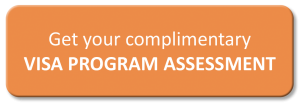The Singapore Ministry of Manpower is currently in the process of expanding the Fair Consideration Framework (FCF) to cover more employers and jobs, effective July 1, 2018. Advertising requirements will increase to at least fourteen days for companies with 10 or more employees and for jobs that pay a fixed monthly salary of less than S$15,000 SGD. This is a change from the current advertising requirement for firms with at least 25 employees and for jobs that pay a fixed monthly salary of less than S$12,000 SGD.
Additionally, starting in January 1, 2019, S Pass eligibility will change. Currently the minimum qualifying salary for S Pass is S$2,200 SGD. The new minimum salary for S Pass will increase to S$2,400 SGD in a two-step incremental process:
- January 1, 2019 S Pass minimum salary increases by S$1,000 SGD to S$2,300 SGD
- January 1, 2020 S Pass minimum salary increases by S$1,000 SGD to S$2,400 SGD
What is the Singapore Fair Consideration Framework?
The FCF is part of the Government’s effort to strengthen the Singaporean core in the workforce. It sets clear expectations for companies to consider Singaporeans for job opportunities, through the use of Jobs Bank advertising of open positions.
The FCF applies to all companies in Singapore. These companies must also comply with the Tripartite Guidelines on Fair Employment Practices and have fair employment practices that are open, merit-based and non-discriminatory.
Who does this new Singapore Fair Consideration Framework affect?
Employers based in Singapore with at least 10 or more employees whose fixed salaries are less than S$15,000 SGD.
What should employers expect with this new Singapore Fair Consideration Framework?
There will be less jobs exempt from the job bank advertising requirement. Applications will require a longer time for submission.
What is the Singapore S Pass?
The Singapore S Pass allows mid-level skilled staff to work in Singapore. Employees need to earn at least S$2,200 SGD a month and have the requisite qualifications and work experience.
Who does this new Singapore S Pass Eligibility affect?
Employers based in Singapore with employees holding S Passes whose fixed salary is S$2,200 SGD.
What should employers expect with this new S Pass Eligibility?
Positions will need to meet the new salary requirements on January 1 of each year to maintain eligibility.
What should employers do?
Employers should plan for the increased advertising requirements and the increasing salary requirements so their recruitment plans can be revised accordingly.
Conclusion
Global Mobility Solutions’ team of global relocation experts have helped thousands of our clients with country-specific employment and work pass requirements, and we can help your company understand how to comply with the new Singapore Fair Consideration Framework and S Pass requirements. Contact our experts online or give us a call at 800.617.1904 or 480.922.0700 today.









